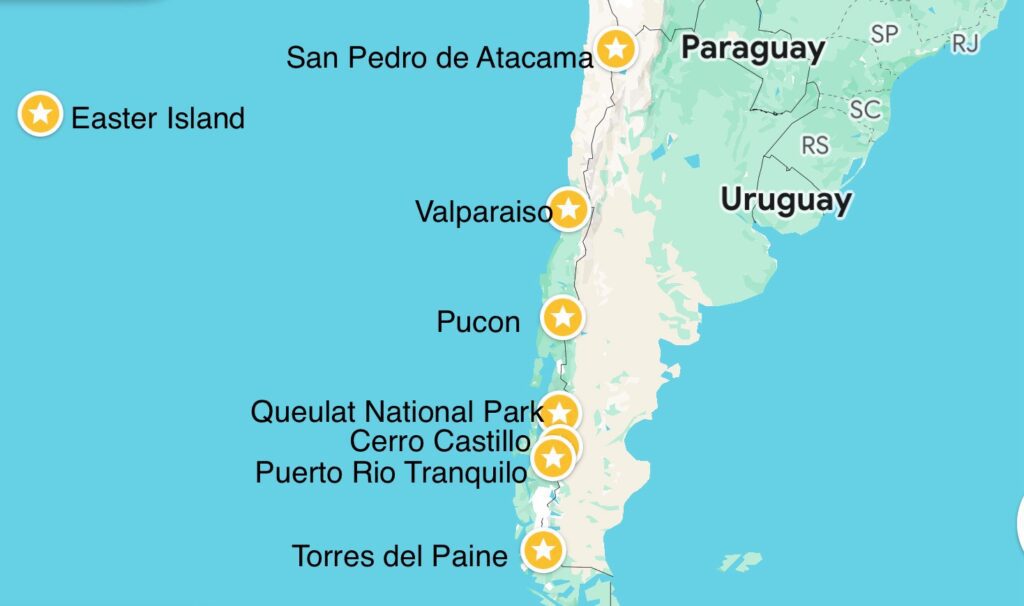HIGHLIGHTS
- Cerro Castillo – a challenging hike to a hanging glacier and turquoise colored lake.
- Easter Island – the land of the moais and home to the Tapati.
- Parque Nacional Queulat – another hanging glacier but reachable after a moderate hike.
- Pucon – surrounded by geothermal springs, lakes, mountains, rivers and waterfalls, this small town makes a nice base for outdoor adventures.
- Puerto Rio Tranquilo – Marble Caves and Glaciar Exploradores.
- San Pedro de Atacama – a magical place.
- Torres del Paine – a must see while visiting Chile.
- Valparaiso – colorful murals.
Time of Visit: December 2023 to March 2024 (Split between Argentina, Antarctica and Chile)
Description
Chile is a huge and long country. With its size, comes various landscapes and climates. Best of all, most of the country seems to be under the tourist radar. Except for Easter Island and Torres del Paine, we did not feel we were surrounded by other tourists unlike popular destinations in Europe.
We briefly highlight each destination. Links are provided if you wish to read more about those places. Hope you will find this post informative and useful so let’s get to it.
Cerro Castillo
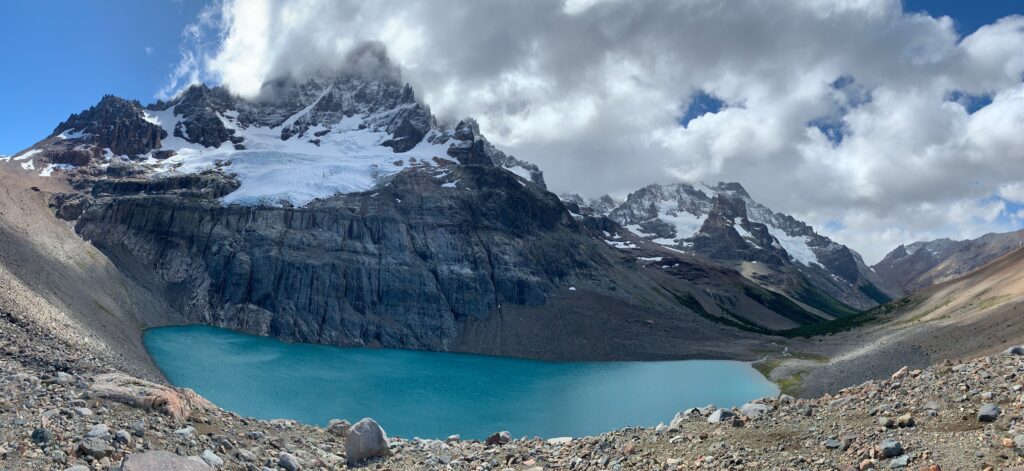

Cerro Castillo is a prominent mountain peak in the Patagonia region of Chile. The mountain is within the national park that bears the same name. The park is either undiscovered or ignored by many as there are not many visitors. We think it is the latter as the beauty of the park can be found in the backcountry. There are no jaw dropping vistas or beautiful landscapes that can be seen just by driving. These vistas and landscapes are located in the park interiors where there are no roads. Visitors have to work hard, really work hard to hike to it.
The magnificent Cerro Castillo peak lies at 7,605 feet above the valley. Beneath it is a hanging glacier still clinging to the mountainside. Still, beneath the towering peak is the Laguna Cerro Castillo, one of the bluest colored lakes I have ever seen. The viewpoint to Laguna Cerro Castillo can only be reached by a 6.5 kilometer grueling hike that involves more than 1,000 meters in elevation gain.
Cerro Castillo is a must stop for those that have the legs and determination to reach it. If you find yourself on the Carretera Austral approaching the small town of Villa Cerro Castillo, look to the west and up. You might just find yourself coming to a stop and getting out of your vehicle as the mountain peak subliminally calls you to explore its majesty.
Easter Island (Rapa Nui)
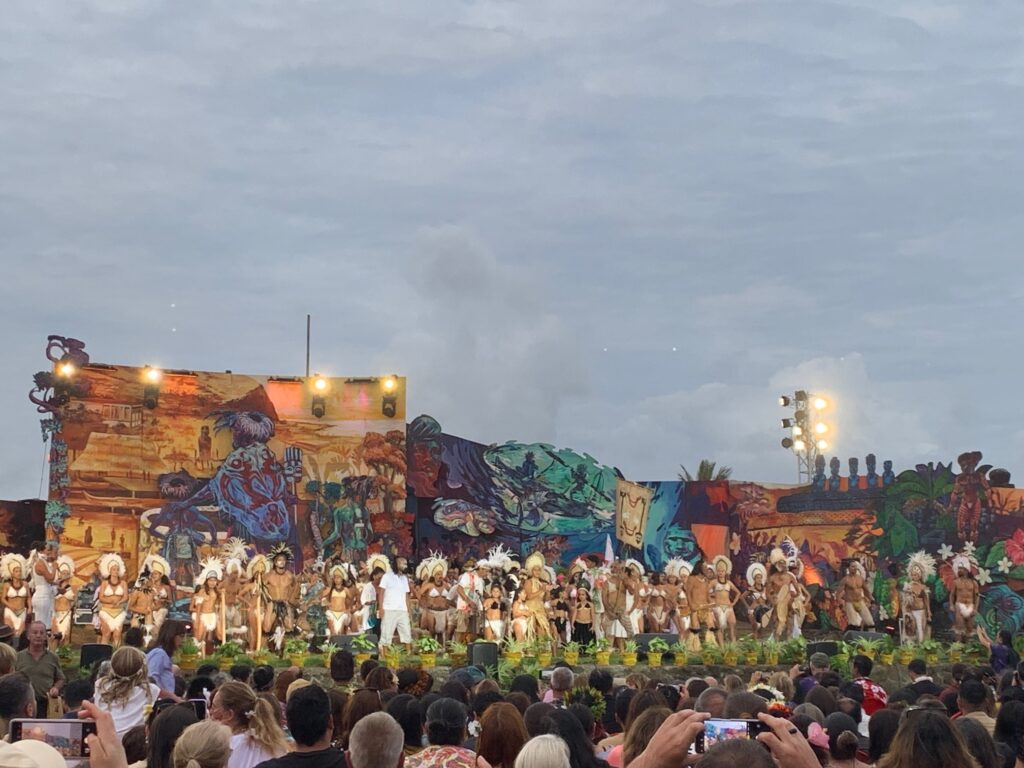

There are only a few iconic places on earth that are readily recognizable by a majority of people. Easter Island or Rapa Nui in the local language is one of them. This tiny Polynesian volcanic island in the Pacific Ocean is made famous because of the moais and the mystery attached to it.
Moais are large monolithic statues that have been carved from the side of the mountain and transported to various locations throughout the island. How these gigantic and heavy structures were transported to its final resting place is still a mystery.
Easter Island is a special territory of Chile that was annexed in 1888. Much of the island is protected within Rapa Nui National Park, a UNESCO World Heritage site.
The Rapa Nui people are proud people despite being almost decimated by slave traders and diseases brought upon by western foreigners. They value their culture deeply and maintain their traditions. They still speak their native language despite being a territory of Chile.
The Rapa Nui people host the Tapati festival as a way to showcase and share their culture with the outside world. The festival is usually held in late January to early February. The actual dates and duration varies but the festival usually lasts at least a week and sometimes longer.
The festival consists of numerous competitions from dancing, to poetry recitals to racing and singing. The festival is a way of maintaining the Rapa Nui culture amongst the islanders, particularly in generating interest and a sense of identity amongst the children. Indeed, it seemed like everybody on the island, young and old, participated in the Tapati.
Parque Nacional Queulat
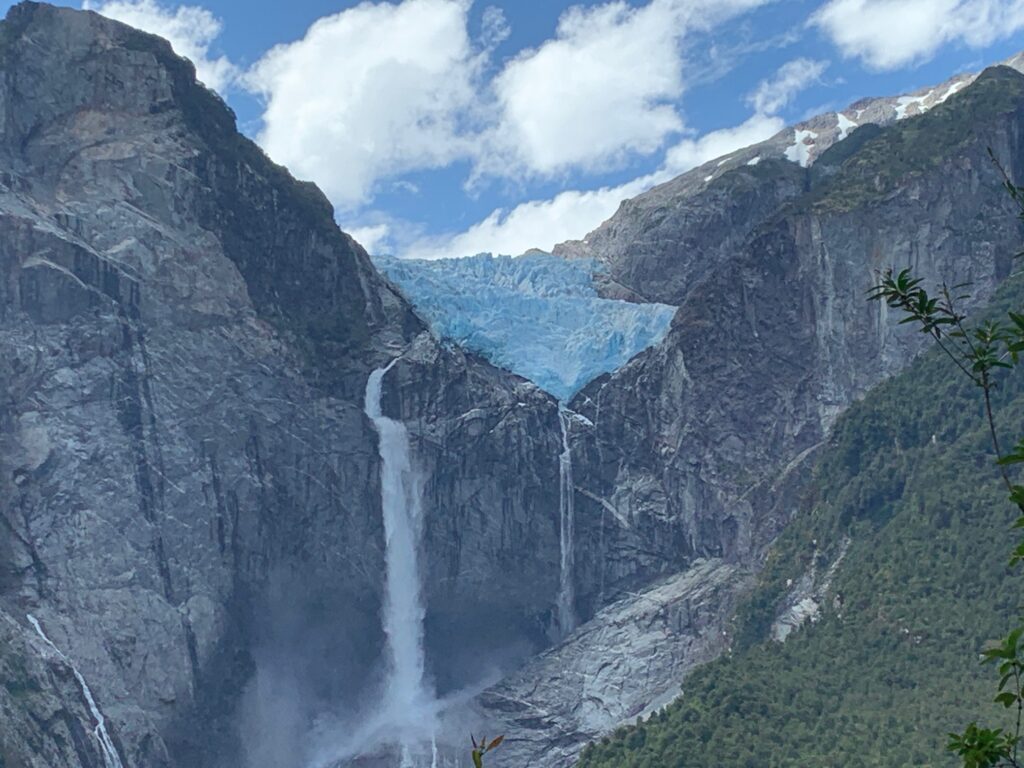

The Ventisquero Colgante or hanging glacier is in Parque Nacional Queulat, Chile. It can be viewed after a 3.3 kilometer one way hike through lush temperate rainforest where it ends at a viewing area of the colossal hanging glacier with waterfall. The hike is moderately challenging on well-maintained trails that wind through dense forest. The viewing area is small and gets packed with visitors throughout the day. It is best to get to the viewing area early.
The combination of pristine natural beauty and the awe-inspiring sight of the glacier makes this hike a must-do for nature enthusiasts visiting the Aysén Region. The best time to embark on this hike is during the summer months, from December to March, when the weather is milder, and the trail conditions are optimal (not muddy). Overall, the Ventisquero Colgante hike offers an unforgettable adventure, showcasing the dramatic landscapes and unique ecosystems of Chilean Patagonia.
Pucón
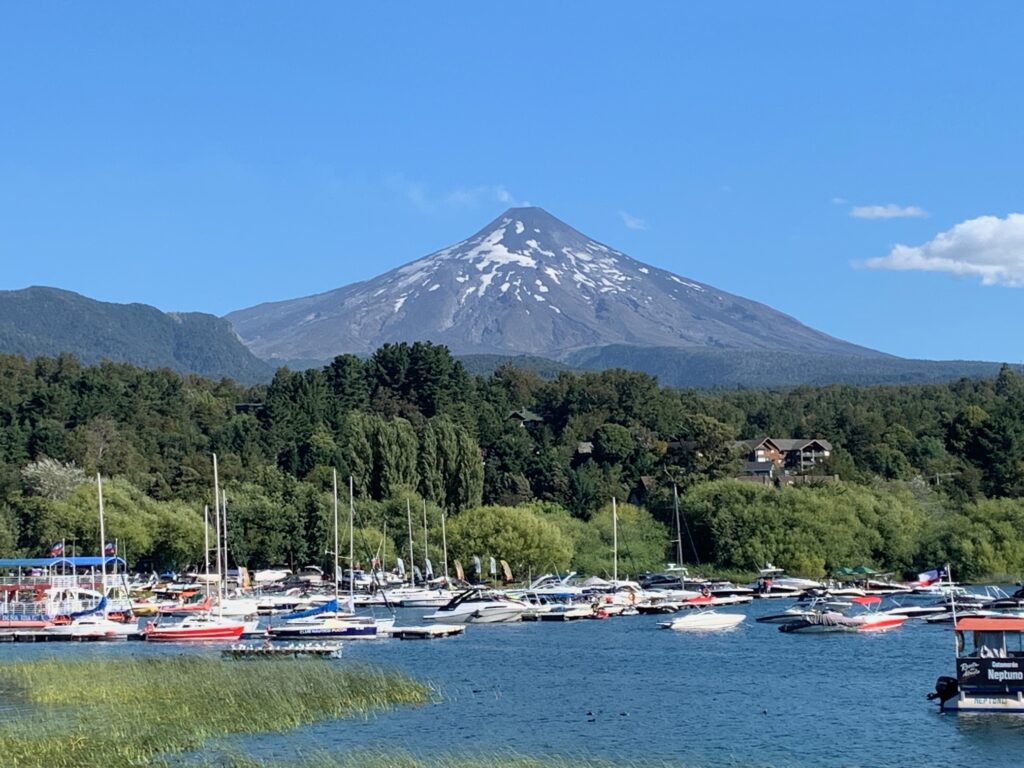

Pucón is a small town located at the east end of Lago Villarrica in Chile’s Araucanía region. It is a popular base for outdoor enthusiasts because of the diverse array of outdoor activities that can be experienced within a hour drive from town. Plus the snow covered peak of Villarrica Volcano within the Parque Nacional Villarrica provides a stunning backdrop.
There is also Parque Nacional Huerquehue, just a little over an hour drive from Pucón. The outdoor activities between the two national parks are limitless. In addition to the two national parks, pristine rivers and lakes such as Lake Villarrica and the Trancura River, offer perfect settings for swimming, kayaking, white-water rafting, and fishing.
There are also several waterfalls nearby with most being inside private properties but accessible by paying a modest admission fee. Being a volcanic region, there are numerous hot springs, known locally as “termas,” nestled in lush forested areas.
Puerto Rio Tranquilo
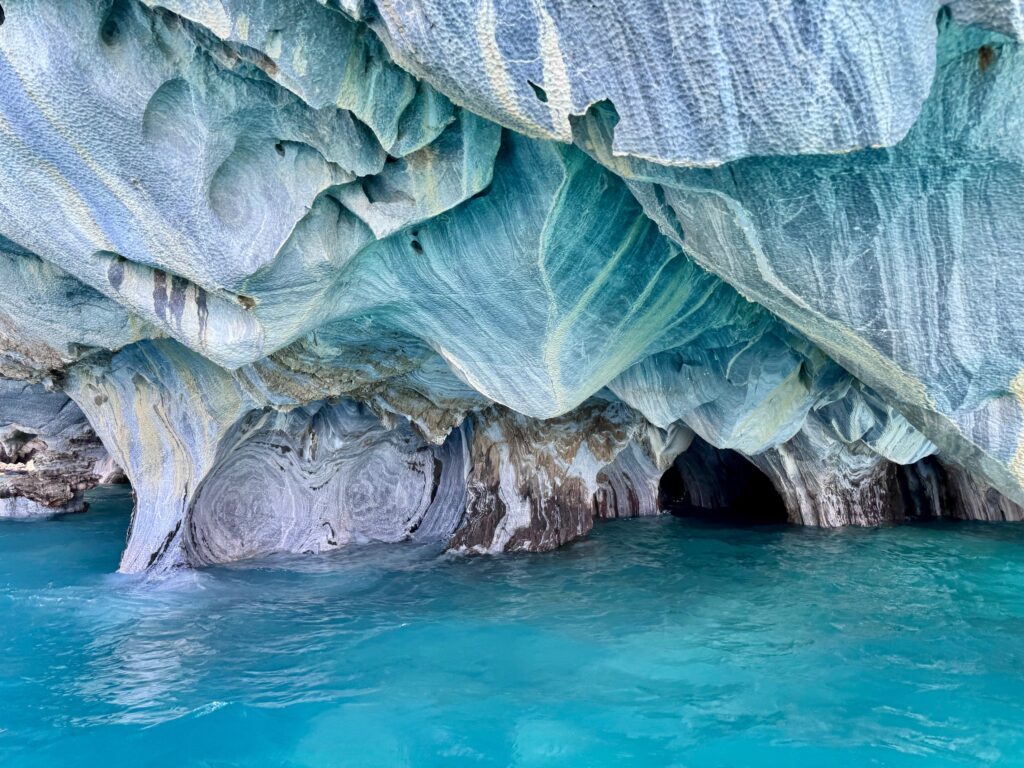

Puerto Rio Tranquilo is a small community on the Carretera Austral in southern Chile. Marble Caves tours start from this tiny community. Puerto Rio Tranquilo also makes a convenient base to venture deeper west into the Aysen Region and see the Glacier Exploradores within the Parque Nacional Laguna San Rafael.
Though there are other marble caves and quarries in the world, none match the beauty of the Marble Caves in Chile. These caves are located on Lago General Carrera near the barrio of Puerto Rio Tranquilo. These caves are formed by thousands of years of erosion due to wave action and the carbonic acid present in the lake. The lake’s Powerade blue water is an added bonus when visiting the Marble Caves.
Glaciar Exploradores is part of the massive Campo de Hielo or Patagonia Icefield in southern Chile. Glaciar Exploradores is within the Parque Nacional Laguna San Rafael which is a pristine park tucked away in the remote part of the Aysén Region. Established in 1959, the park covers approximately 17,420 square kilometers. It is one of the largest national parks in Chile. The glacier can be seen after a moderate 2.5 kilometer hike to two viewing platforms that provide spectacular panoramic views.
San Pedro de Atacama
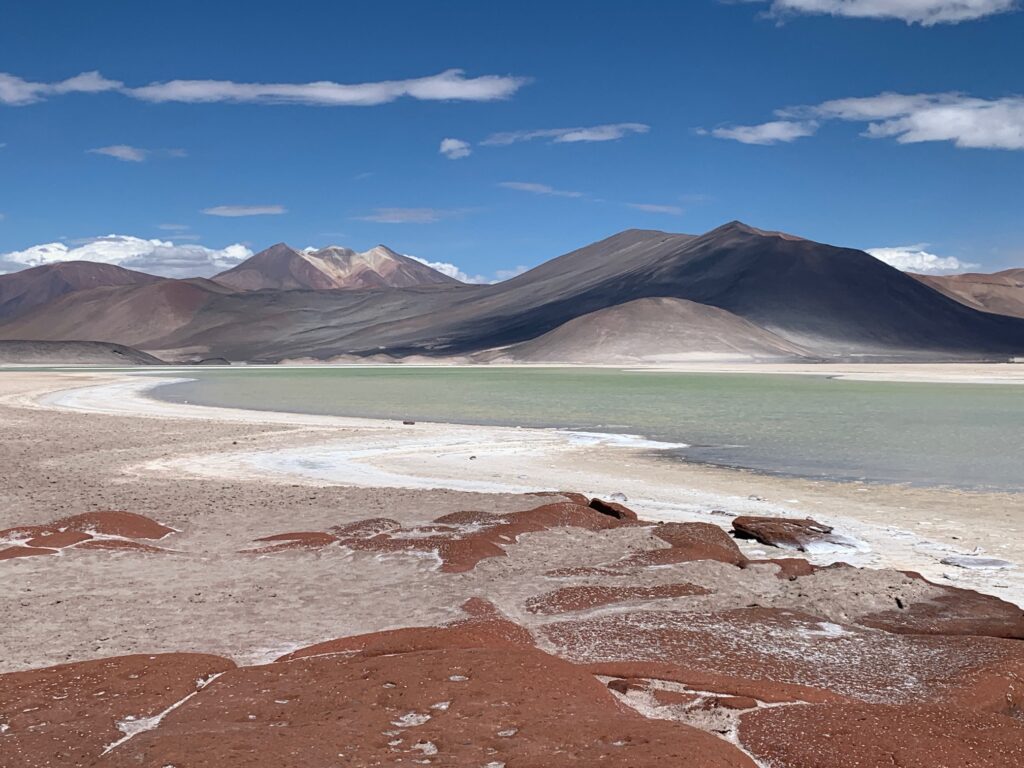

San Pedro de Atacama is the base for explorations of the Atacama Desert. At first glance, the Atacama Desert may look bleak and unexciting. But there are many hidden gems that the driest place on earth hides and within a couple of hours drive from San Pedro de Atacama.
The eroded sandstones at Valle de Luna reminds us of our home state of Arizona. Floating effortlessly in the highly saline water of Laguna Piedras was very enjoyable and a nice way to cool off during a hot day.
Purilibre is another soaking spot that is free for everyone. All you have to do is drive there and take a short walk. Flamingos can be seen feeding in Laguna Flamingo just before the barrio. Near the sleepy barrio of Machuca, guanacos, llamas and burros can be seen roaming around. Plus the high alpine scenery resembles pictures of Mongolia.
Both the Salar de Agua Calientes (Piedras Rojas) and Lagunas Miscanti y Miñiques were breathtaking. Last but not least, seeing the constellation in the Southern Hemisphere is a nice way to end a trip to San Pedro de Atacama.
Torres del Paine National Park


Torres del Paine for sure is on a lot of people’s bucket list. The majestic mountains with pointed peaks that look like horns that contrast nicely with the blue sky and the jade and turquoise lakes. As an added bonus, glaciers are still present and can be viewed from roads within the park. To add to variety, guanacos can often be seen on its rolling grasslands.
Torres del Paine National Park is located in the southern Patagonia region of Chile. It was established in 1959 and covers approximately 2,400 square kilometers. The park is part of the UNESCO-declared Biosphere Reserve and attracts thousands of visitors each year who come to experience its hiking trails, wildlife, and breathtaking scenery.
The park is home to a rich array of flora and fauna. Visitors can explore numerous trekking routes, with the W Trek and the O Circuit being the most popular. These routes offer opportunities to see the Grey Glacier, the French Valley, and the base of the Towers, among others.
Valparaiso


Valparaíso is a vibrant port city located on the central coast of Chile. Valparaíso is renowned for its vibrant street art that transforms the city into an open-air gallery. Artists from around the world come to Valparaíso to contribute to its colorful murals, making it a hub for contemporary urban art.
The hills of Valparaíso, particularly Cerro Alegre and Cerro Concepción, are adorned with intricate and expansive murals that provide aesthetic pleasure. Some murals even have subtle messages drawn on them. Guided street art tours are available, providing tourists with deeper insights into the stories and artists behind the murals.
SUMMARY
Chile’s huge size provides varying landscapes and climates. The driest place on earth is located here in the Atacama Desert. The Patagonia region which begins just south of Pucon is an explorer’s paradise. Several mountain ranges with hidden glaciers can be found in this region. Probably one of the most beautiful places on earth is Torres del Paine. There is simply nothing that parallels it in beauty.
We are pretty sure that there are more places in Chile worth discovering. But there would be no regrets in visiting the places mentioned in this article.

